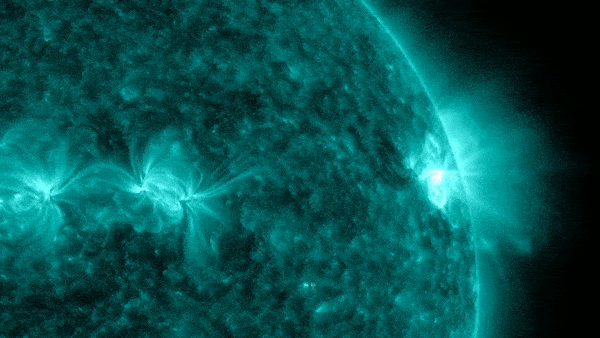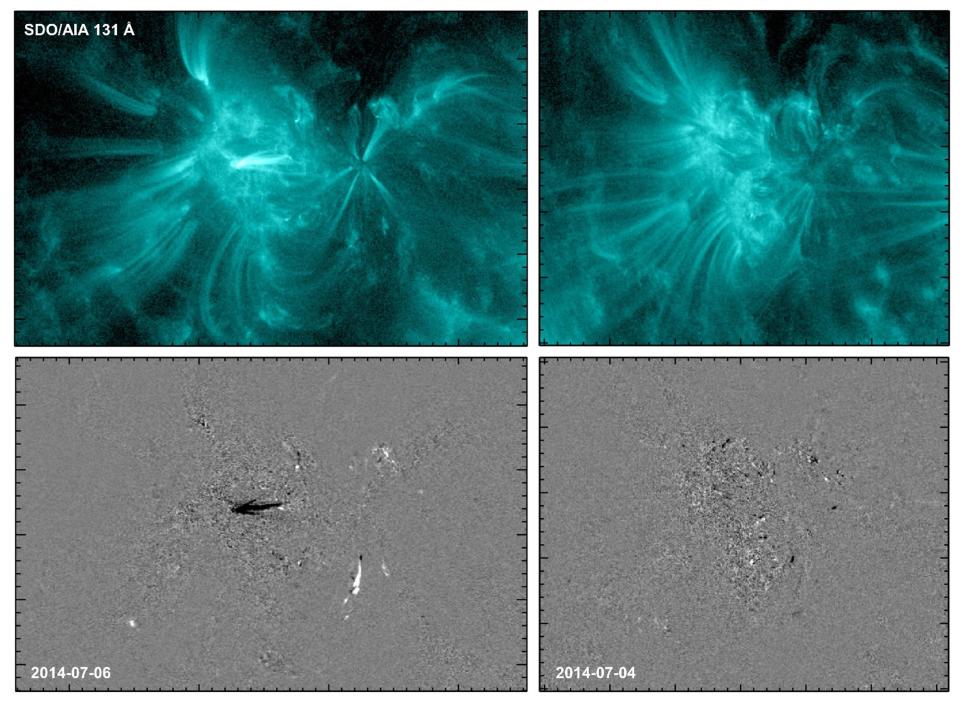Mysterious 'sparks' on the sun could help scientists predict solar flares

Solar flares, powerful bursts of radiation from the sun, are often preceded by a pre-flare spark, scientists have discovered. The finding could lead to better predictions of solar storms, which can disrupt power grids and communications systems on Earth.
The scientists made the discovery after digging into years of data from NASA's Solar Dynamics Observatory (SDO), a satellite that's been observing the sun since 2010. Since the 1970s and '80s, researchers had witnessed these pre-flare flashes, using tools such as ground-based observatories, so there was a lot of anecdotal evidence that the flashes and flares were related, KD Leka, a senior research scientist at NorthWest Research Associates (NWRA) in Boulder, Colorado, told Live Science. But those researchers didn't have instruments like SDO, which is constantly watching and recording the sun's activity from space.
"Images of [the sun] have definitely been helping scientists and forecasters understand when an active region is likely to be flare-productive," Leka said.

In a new set of papers published in The Astrophysical Journal, Leka and her team combed through nearly a decade of SDO data, zooming in on active regions of the sun known as sunspots. These dark areas are places where the sun's magnetic field is particularly active due to contortions deeper within the star. The contortions cause the sun's magnetic field to twist and tangle. And when those magnetic-field lines snap back into their original form, an enormous burst of energy erupts from the surface.
These explosions can manifest as either a solar flare or a coronal mass ejection (CME). Solar flares are intense surges of X-rays and energy that shine in all directions. The electromagnetic energy moves at the speed of light and can arrive at Earth within 8 minutes. CMEs, by contrast, are explosions of highly charged particles that erupt in a particular direction. They move more slowly, at 155 to 1,900 miles per second (250 to 3,000 kilometers per second); it can take several days for a CME to sweep over Earth.
Both kinds of explosions can cause damage to power systems and telecommunications on Earth, but they are generally harmless to humans and other living things.
In thousands of terabytes of data from SDO, Leka and her team found that solar flares are often associated with a moment of brightness, like when you strike a match and it sparks before igniting. These sparks occurred up to one day before flares erupted from the same region of the sun, the authors found.
The findings, while exciting for our understanding of solar physics, do not mean that scientists can now predict solar flares, Leka said. Think of it like forecasting a volcanic eruption — earthquakes near an active volcano tell scientists that underground magma is on the move and could be leading to an eruption. So scientists monitor earthquakes and tweak models to predict when an eruption might occur. But no single earthquake is a predictor of a volcanic eruption.
"Down the road, combining all this information from the surface up through the corona [the sun's outer atmosphere] should allow forecasters to make better predictions about when and where solar flares will happen," study co-author Karin Dissauer, a research scientist at NWRA, said in a statement.
For now, the research has spawned new questions for Leka, such as how the dynamics of the sun's magnetic field are connected to processes that occur deep within the sun and how to combine data from both those regions to help scientists predict solar eruptions.
